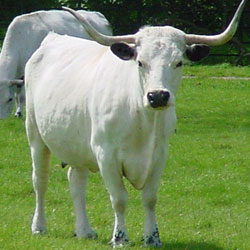About this series:
This series of caches is based upon the life and work of dairy farmers Mark & Pen DeLogg on the Lincolnshire Fens. As well clues to solving the puzzle on each cache page will be a fact about cows and their behaviour, as well as information about particular breeds of cattle around the British Isles and the world.
- The cache is not hidden at the published coordinates.
- Steep drops and water may be encounted at some GZs, keep the little ones safe.
- No animals were encountered when the caches were placed.
- The cache size was made as large as possible according to the hiding place, varying from magnetic nanos to regular size boxes
- You may need to provide your own TOTT i.e tweezers
- Please park sensibly, safely, and considerably.
- The D/T ratings concern the difficulty to both the puzzle and hides.
Other caches in this series:
#1 Holstein | #2 Limousin | #3 Guernsey | #4 Charolais | #5 Highland | #6 Galloway | #7 Dexter
#8 Belted Galloway | #9 Lincoln Red | #10 Jersey | #11 Shorthorn | #12 Hereford | #13 Gloucester
#14 Aberdeen Angus | #15 Belgian Blue | #16 White Park | #17 Blonde d'Aquitane | #18 South Devon
#19 Aryshire | #20 Brown Swiss | #21 Simmental | #22 Gelbvieh | #23 Fleckvieh | #24 Piedmontese
#25 Normande | #26 North Devon | #27 Sussex | #28 Welsh Black | #29 Luing | #30 Chillingham
#31 Irish Moiled | #32 English Longhorn | #33 Deoni | #34 Ankole Watusi | #35 Murray Grey
#36 Brahman | #37 Icelandic
Cow Fact:
In 1940 two pairs of White Park cattle were exported to Canada to preserve a British "national treasure" from the threat of Nazi invasion.
 About White Park Cattle:
About White Park Cattle:
White Park cattle are a remarkably ancient breed. Two thousand years ago a type of cattle similar to the White Park breed were found through much of the British Isles, particularly in Ireland, Wales, northern England and Scotland. The colour is distinctive, being porcelain white with coloured (black or red) points, namely ears, nose, eye rims, hooves, and teats and tips of the long horns. The colour pattern is dominant to other colours. The horns of the cows vary in shape, but the majority grow forwards and upwards in a graceful curve. The horns of bulls are thicker and shorter, and not so uplifted. In their native environment in Britain, White Park cattle are noted not only for their distinctive appearance, but also for their grazing behaviour, where they show a preference for coarser herbage
They are beef animals noted for the quality of their meat.They are capable of converting coarse herbage into high quality meat, and of gaining weight at over 1 kg per day in good conditions
They are mostly found on farms producing speciality beef, but also on Rare Breed farms such as Wimpole Home Farm in Cambridgeshire, England,
 Now for the puzzle:
Now for the puzzle: 
Farmer Mark DeLogg was always conscious to feed his cows the best quality fodder and concentrates.
He hired a consultant to advise him of what the feeds were available to him together with all the costings.
Matching a cow's diet with their output and at the same time making her feel contented is a balancing act, just like acrobatic gymnastics.
Should he feed dried beet pulp at £75 a tonne or replace it with brewers grains at £50 a tonne?
He made his own quality grass silage and grew maize which would provide most of the diet his cows ate, but he needed to supplement their diet with some concentrates. With so many feeds available it was a minefield.
Next door to Mark's farm was one of the biggest arable farms in the county. They grew a variety of different crops like carrots, potatoes, wheat and barley perhaps they could help?
He already bought all the straw and hay he needed from them so maybe he could get some more feed from them at the right price
What ever feed he chose it had to have the right elements and properties that would provide the best feed values to the diet.
 Check your Solution:
Check your Solution: 

Logging Etiquette: Geocache hiders sometimes go through a great deal of planning to place their caches. As a result, they'd like to hear your feedback on whether you liked or disliked any aspect of the hide, the journey or location, or if you feel that some cache maintenance is required. Single word, acronym, or "copy and paste" logs may be easier when you have a lot of caches to log, but it doesn't tell the hider or other finders anything about your adventure (or lack thereof) in finding the cache. Please keep this in mind when entering your log.
Travelbug Etiquette: Cachers pay good money for TravelBugs and Geocoins. Please if you take a TB or GC from a cache will you ensure it is correctly logged in and out, also If you take one that still shows somewhere else please be patient before “grabbing” the item, it does not get its mileage by being grabbed and the last person to place may not have had time to log a previous find or the one you took it from. This is particularly important on busy and new caches. If you have an issue with a bug please e-mail the owner through their profile and advise them of the issue. They will be pleased to hear from you.